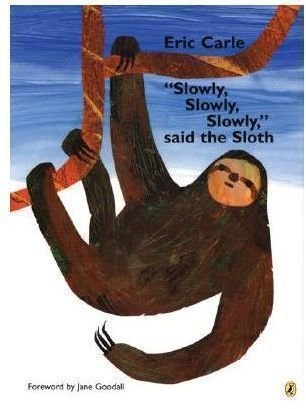"Slowly Slowly Slowly Said the Sloth" a Lesson for 3rd Grade Students
Lesson Overview and Objectives
“Slowly, Slowly, Slowly Said the Sloth” can be a great book to teach young learners how to relax and accep others. This lesson can be used as is or combined with other lessons in a unit on rain forests or South America.
This lesson is for third grade students and takes about 45 minutes to complete. The objectives for the students are:
- Learning it is okay to be different.
- Practicing the value of slowing down and enjoying life.
- Celebrating individual uniqueness.
- Learning about the importance of saving rainforests.
- Identifying and understanding animals of South America.
Vocabulary Recognition and Development
When kids work with words on a word wall, they see the word, hear the word, and link the visual learning with the auditory experience. Try these words for your classroom word wall:
- Slow – the opposite of fast
- Quiet – absence of activity
- Boring – not interesting
- Lackadaisical – lacking spirit
- Dawdle – moving slowly
- Dillydally – taking one’s time
- Unflappable – slow to become excited
- Languid – lacking enthusiasm
- Stoic – one who shows no emotion
- Impressive - magnificent
- Sluggard – lazy
- Lethargic – lacking energy
- Placid - undisturbed
- Calm – still or peaceful
- Mellow - relaxed
- Slothful – one who does not want to work
- Relaxed – in a state of resting
- Tranquil - placid
- Lazy – slow moving
- Slowly – taking one’s time
Prepare the words by printing each word on a strip of paper or index cards. Self-sticking address labels are an easy way of creating word wall strips for vocabulary exercises.
Lesson Plan Teaching Method

Hold the book so the cover can be clearly seen. Children associate words with meanings, so point to the title and pronounce the words. You can also point to other words while reading to provide visual cues for the class.
Try these discussion questions, either during the story or afterward, to assess comprehension. Some questions, like the ones about saving the rain forest or why the sloth did not want to play lead naturally into discussions about preserving natural resources and accepting others.
- What kinds of animals are found in the rain forest?
- What do you know about the rain forest?
- What does slothful mean?
- Why is it important to save the rain forest?
- How can we help preserve the rain forest?
- Why does the sloth refuse to run and play with the other animals?
- The sloth does not answer when the other animals talk to him – why not?
- Name some things people do slowly.
- Where did the sloth sleep and how did he sleep?
- How do you sleep?
- How many of you would like to sleep in a tree?
- Where could you see a sloth?
Vocabulary Exercises
To conclude the lesson, work with the children as a group practicing saying and defining the vocabulary words. Let children take turns placing words on the word wall.This lesson can be extended with other activities like using pictures of various rain forest animals as visual aids to reinforce the learning concepts of the book.
This lesson plan can help students examine social issues like diversity and environmental responsibility. Literacy skills are encouraged and supported with vocabulary exercises. Children learn the importance of taking life easy.
Sources
Merriam-Webster.com
Slowly, Slowly, Slowly Said the Sloth, Eric Carle
Image Credits
Wikimedia Commons/Kauczuk
